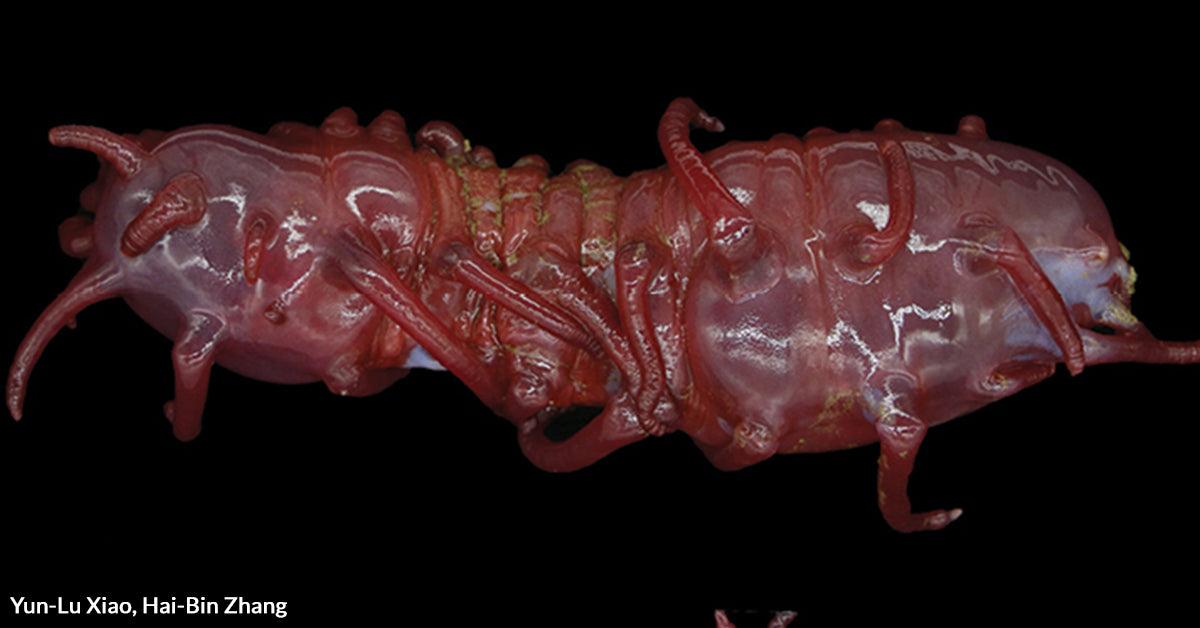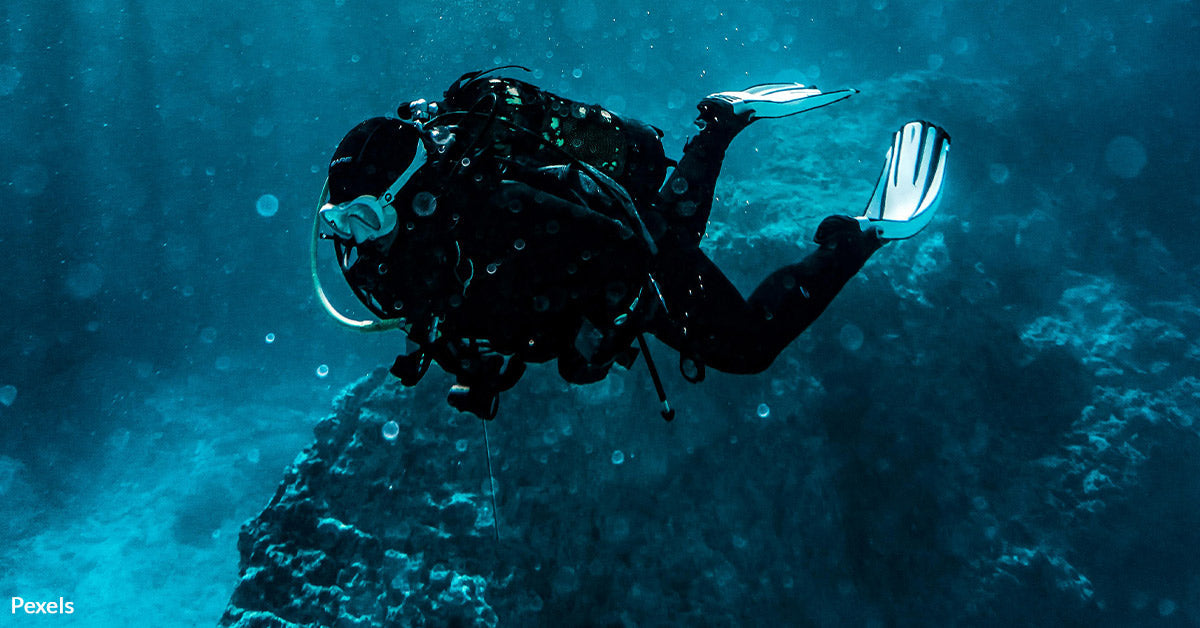Scientists Amazed As Rarely Seen 'Black Seadevil' Swims To Ocean's Surface
Experts on a shark research expedition off the coast of Tenerife in Spain made an extraordinary discovery. They documented a live black seadevil, also known as a humpback anglerfish, in an area usually dominated by well-lit waters.
This creature typically inhabits deep seas where sunlight does not penetrate. Researchers with the NGO Condrik Tenerife and marine photographer David Jara observed the fish and noted its unusual behavior in shallower depths, CNN reports.

Photo: Wikimedia Commons/A. L. Clement, License: Public Domain
This deep-sea anglerfish rarely emerges into light-filled waters.
Unusual Appearance in Daylight
This small fish measures around six inches in length and has a pronounced head with rows of pointed teeth. It carries a luminous lure on its forehead that attracts prey in pitch-black regions of the ocean, CBS News reports. The black seadevil’s typical habitat, often called the midnight zone, lies at depths between 650 and 6,500 feet. Some scientists suggest the species can descend as far as 15,000 feet.
A surface-level encounter with this anglerfish is extremely rare. Observers suspect the fish may have surfaced because it was ill or threatened by a larger predator, People explains. The black seadevil seen near Tenerife did not survive after it reached shallower water. Researchers collected its body for further study.

Photo: Wikimedia Commons, License: Public Domain
The female black seadevil bears a bioluminescent lure on her forehead.
Adaptations for Life in the Abyss
Black seadevils thrive in an environment free of sunlight. Temperatures in that zone hover around 39 degrees Fahrenheit, with pressure that can exceed several thousand pounds per square inch, the New York Post reports. In these conditions, the fish depends on its bioluminescent lure to tempt smaller creatures into its mouth. Experts note that this lure glows because of a partnership with bacteria that produce light.
Scientists compared the black seadevil’s hunting technique to a spider’s patience in a web. The fish waits for unsuspecting prey to approach, The New York Times reports. Large jaws and needle-like teeth help it consume meals that might exceed its usual size range. Its black exterior hides it from other deep-sea creatures that use their own sources of light in an otherwise dark world.

Photo: Wikimedia Commons / NOAA, License: Public Domain
This species can inhabit depths exceeding 6,000 feet.
Why This Emergence Matters
This sighting expands scientific understanding of deep-ocean anglerfish, especially since most documented examples are dead specimens that wash ashore or appear in deep-sea submersible footage, according to National Geographic. Many museums worldwide display long-preserved anglerfish, so observations of a live adult near the surface allow marine experts to examine its movements and body structure under conditions that differ from the midnight zone.
Marine biologists speculate that extreme currents, illness, or sudden changes in water temperature may have carried this individual fish upward. Another theory suggests it might have ingested prey with a gas-filled swim bladder, which forced it upward. Scientists remain uncertain about the exact cause.

Photo: Pexels
Humpback anglerfish thrive in the deep ocean’s perpetual darkness.
Insights into Deep-Sea Life
This event highlights how much remains unexplored in the largest ecosystem on Earth. Water covers most of the planet, yet humans rarely encounter creatures from the deepest layers. These glimpses of black seadevils and other seldom-seen fish offer a reminder that many oceanic secrets remain hidden in darkness.
Experts also hope to spark more public interest in protecting ocean habitats. Some fear that unusual sightings in surface waters could reflect stress from pollutants, habitat disruption, or rising ocean temperatures. Researchers point out that curiosity about these alien-looking animals has value, since public awareness can inspire efforts to preserve the ocean’s biodiversity.
Female Focus and Distinct Features
This surface visitor was female, a fact evident from the prominent luminescent lure on her forehead, the New York Post reports. Males are smaller and lack such a powerful glow stick. The female’s size can reach seven inches, and her imposing jaws give her a menacing look. This difference in male-female anatomy occurs in multiple anglerfish species. Males often latch onto females for reproduction in the deep sea, an odd strategy that scientists continue to study.

Photo: Pexels
The black seadevil’s daylight appearance remains a mystery to be solved.
An Invaluable Scientific Treasure
Although it perished soon after surfacing, the black seadevil from Tenerife opens new windows into deep-sea research. Curators at a local museum in the Canary Islands will examine the body to learn more about the species’ anatomy and biology. Experts hope for more opportunities to encounter living deep-sea creatures. They seek answers to how these organisms adapt to low food supply, crushing pressure, and perpetual darkness.
For now, the ocean’s hidden kingdom has revealed one of its most mysterious inhabitants. Researchers remain eager for further investigations into the midnight zone and the creatures lurking there. They also note that each encounter with a black seadevil adds vital knowledge about life in the planet’s most unforgiving environment.





























































































































































































































































































































































